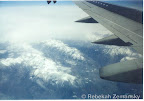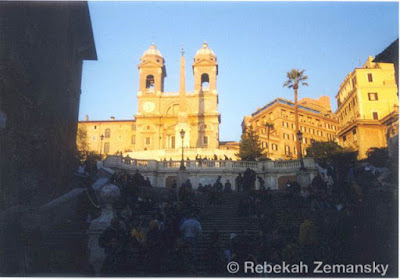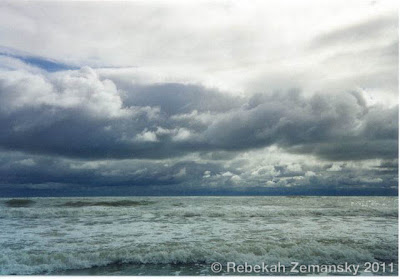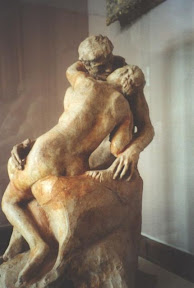Since moving to Phoenix, we’ve only been back to Kansas once – a lightening quick holiday tour of four cities where friends and family live, in wicked winter driving conditions and with an international flight out of Phoenix’s Sky Harbor to catch within hours of getting back to Arizona. It was a good but hardly thoughtful trip, a blur of hugs & faces & snow under that familiar big Midwest sky.
This time we flew back (thanks to an unbelievable sale on airfare). Cutting out four days of driving gave us more time, and there were fewer deadlines and less homework to keep track of.
Should it have felt like a trip home?
It didn’t.
As we drove through places so familiar, I felt recognition but not nostalgia. I realized that even as we pulled out in the U-Haul just over two years ago, the house my family owned for 20 years was already becoming past and I had to remind myself to take one last look in the side view mirror, in case I wanted that memory for later, just before we slid around the corner.
Today, I can show what matters most to me about Kansas in a single photo of my cousin’s bookshelf.
This is why, wherever I end up, I’ll be drawn back from time to time, making the drive or taking the flight.
And from now on, this is the time of year I want to visit. The green of summer is at its lushest, the rivers are high and the earliest fields are beginning to boast hay bales instead of faded corn. In a far more modest way than the flashy bright pinks and oranges of the desert sky, the sunsets can be spectacular.
 |
 |
 |
 |
 |
OK. Maybe there’s a little bit of nostalgia after all.
| From instagr.am |
“Twenty years from now you will be more disappointed by the things that you didn’t do than by the ones you did do. So throw off the bowlines. Sail away from the safe harbor. Catch the trade winds in your sails. Explore. Dream. Discover.” — Mark Twain
Written in April 2010 by my mother, Ellen Kroeker, and shared here with her permission
***
| They shall grow not old, as we that are left grow old; Age shall not weary them, nor the years condemn. At the going down of the sun and in the morning We will remember them. |
 |
The Ode comes from “For the Fallen,” a poem by the English poet and writer Laurence Binyon and was published in London in The Winnowing Fan: Poems of the Great War in 1914. This verse, which became the “Ode for the Returned and Services League,” has been used in association with commemoration services in Australia since 1921.
We were at the Dawn Parade for ANZAC day today, a big occasion here. April 25 might be one of the most sacred days in New Zealand. While it is in honor of all service personnel, it is mostly a commemoration of Gallipoli, a devastating battle in Turkey during WWI, and an honoring of those who died there. Our friend (89, former British Royal Navy WWII and son of a man wounded in Gallipoli) wanted us to go with him and we did.
When the white haired men march behind the kilted pipes and drums through the dark autumnal morning, one can feel the ghosts of the slaughtered young men hovering around them. Surrounding them as they stand in a great circle for the service, families hold their babies, teenagers with poppies pinned to them jostle, albeit quietly , and one is aware that these are the descendents of those who served and connected to those who died. About 100,000 New Zealanders served in World War I out of a population of less than a million. The man in front of me, the woman beside me wiped tears throughout the service. The morning was mild and as they all marched away, first the old veterans, then some whose hair was not completely white and finally, bringing up the rear, the snappily dressed young ones, the rosy fingered dawn spread across the sky.
Gil, who grew up on Sunday night documentaries that extolled the heroism of those who fought in WWII and listened to his father’s stories from his time in the South Pacific during that war, always wanted to be on the side of the good guys, to fight the kind of people who were responsible for the Holocaust and for Pearl Harbor. These were the myths that he grew up with. There were no other narratives presented.
So the little Gil listened, learned, and when he grew up, he dedicated his life to being one of those good guys. But the enemies were shadowy and some seemed to be in his own government, the men of government who sent young men into the Vietnamese jungles for dubious purposes. It wasn’t a clean or clear war as WWII had seemed to be. Still, he had made a commitment and he had to meet his obligations.
When he was presented with an alternative (if you go back to Vietnam, I’ll divorce you, said his then-wife; if you don’t go to Vietnam, we will court-martial you, said the Navy), he went to Vietnam and, back in the jungle, with hostile fire around him, he got his “Dear John” letter, informing him that the divorce was going ahead.
And when he returned to the States with his discharge papers much later, there were no parades, no heroes’ welcomes. He was no one’s hero. Change out of your uniform, he was advised. Try to travel incognito, as if no one would recognize a military haircut in the days of long-haired hippies. He opened his green footlocker and packed all the medals and citations away.
This week, Laurie, our older friend and the Royal Navy veteran, urged Gil to pull out the medals, pin them to his chest and march in the Dawn Parade. Gil said it wasn’t his military, it wasn’t his occasion. Laurie said, come on and Gil doesn’t easily say no to Laurie, this cheerful man who once introduced Gil to someone as his “other son.” So we got up at 5 am, and while Gil put his ribbons on, they were nearly undetectable under his jacket. Gil was introduced to others at the gathering place as former LT of the US Navy and welcomed as such.
The kilted bagpipers and drummers swung into place, and the white heads, male and female stood to attention under the instructions of a very quavering voice. They turned on command, the drums began, the pipes began a mournful tune, and, with fragmented step, they marched off to the town center and the cenotaph for the Dawn Service. There, among the Brits, the Maoris, the Scots with their family tartan colors, the Irish, marched one American, slightly uncomfortable, slightly at home, as always. Along the side of the marching column walked wives and husbands, children and grandchildren.
On one corner, a small boy was riveted by the parade of heroes.

photo credits : Fleur Phillips & James Pratley
Growing up my birthday always fell over spring break. My parents would take my brother and I to California, where we could see family from both sides – my mom’s sister and brother-in-law, my dad’s siblings and parents – and then there’d be a few days for just the four of us at the Monterrey Bay Aquarium or a funny little motel in Seattle, the city where my parents met and where I was born. As we made our way up the coast, each stop with relatives would mean a few presents and a different cake.
When I was 14, though, my school offered the opportunity to go to Rome for just over a week. I’d been dreaming of going “abroad” for longer than I could remember. There was no way I could say no.
 |
 |
When we stepped off the last plane, the air was different. There were palm trees and mopeds, arches and pillars, fountains and ruins.
 |
 |
 |
I was addicted – I had a passport, and my life would never be the same.
 |
 |
My phone rang tonight with an unfamiliar area code, and from a noisy room, a woman’s voice came through : “I’m calling on behalf of Leonicio Delgado, who spoke to you this summer…”
It took me a few moments to understand.
“About his daughter, about Elizabeth?” I ask.
“Yes, about Elizabeth – he’s calling to see if you’ve heard any news, have you heard anything?”
Laura Elizabeth Delgado went missing over a year ago, in August 2009. She called her family from Nogales, Sonora and told them she would be crossing the border soon with her neighbor, Concepcion Tlatenchi. Concepcion also contacted her family just before they crossed.
No one has heard from either woman since.
I stumbled across this story learning about the border, the risks people will take to cross it – and what happens to their families.
Concepcion’s daughter called agency after agency looking for her mother before she turned to the press. She spent hours on the phone with me and sent me family photos by email before agreeing to let me visit her on the east coast. She also told me about Laura Elizabeth, and gave me Leonicio’s contact information.
I don’t speak Spanish – I say I’m working on it and I am, but it’ll be ages before I have the fluency to talk comfortably or do a thorough interview. But for people with common purpose, there’s always a network.
My phone call was answered by a family friend, whose email I trouble shot in exchange for help translating questions and answers that slid back and forth electronically until Laura Elizabeth’s story and then her photograph appeared on my laptop screen.
I finished the story, and told my editor I wanted the photographs to run as large as possible – they can never run too often or too large for me. If anyone responded with information, I promised the families I’d pass the information on.
I didn’t know what to expect – where the articles would run, who would see, who would care. I didn’t know if anyone knew anything. The desert doesn’t pick up the phone and call in.
And it’s been silent.
With other stories and assignments – and the rest of modern day life – competing to fill the gap, I’ve only thought about the story when people ask what I did this summer or what I’ll do next. It’s been far too easy to think of the project as complete because the edits are finished and the story hasn’t been picked up. It seems to float, motionless, on the site – static. Over.
But for Maria and Leonicio, it’s not. For Maria’s three children, her husband, her brother, her sister and their father, it’s not – just as it’s not over for Leonicio and Laura Elizabeth’s young daughter, who’s two or maybe three by now.
Tonight, Leonicio’s friend called me on his behalf from a noisy restaurant in New York, asking if I had news. Through the upbeat music in the background, I couldn’t help but picture the father who has missed his daughter ever since she didn’t arrive at his door.
I live with someone’s stories for a few hours, a few days, maybe, if I’m lucky, a few months. I won’t forget that you live with your story every day.
























































